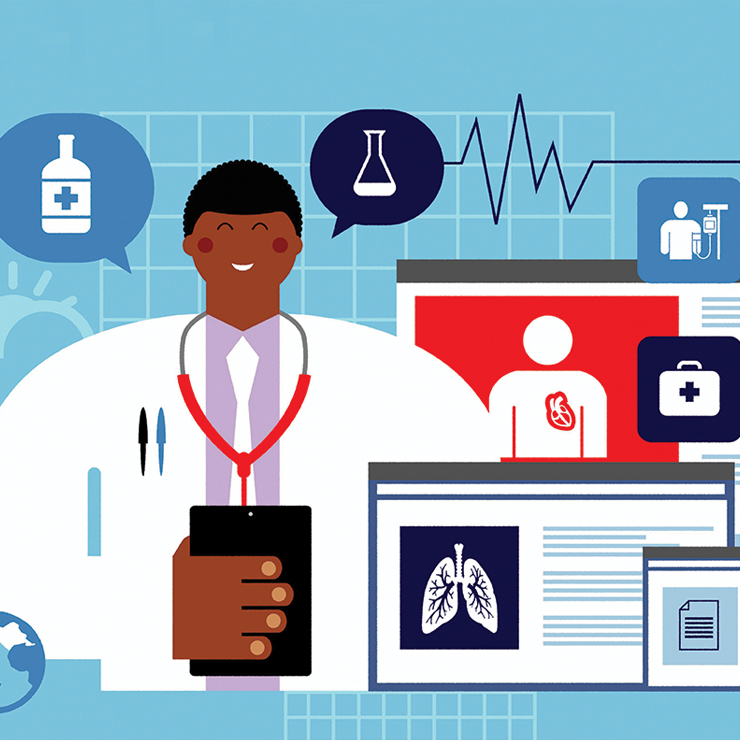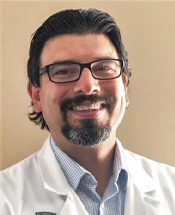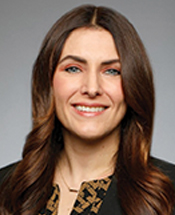 There is always a new technology hitting the market, and with it comes promises of innovative capabilities and a slew of bells and whistles. It’s easy to feel like a kid in a high-tech candy store as you peruse the latest lineup of goodies and think about what you want and need. There are promising products that can help promote resident safety and quality of life, streamline tasks, and improve documentation as well as data collection and analysis. But before you spend that money, really think about the what, why, and how of any new technology. Otherwise, you could end up regretting your new technology purchase.
There is always a new technology hitting the market, and with it comes promises of innovative capabilities and a slew of bells and whistles. It’s easy to feel like a kid in a high-tech candy store as you peruse the latest lineup of goodies and think about what you want and need. There are promising products that can help promote resident safety and quality of life, streamline tasks, and improve documentation as well as data collection and analysis. But before you spend that money, really think about the what, why, and how of any new technology. Otherwise, you could end up regretting your new technology purchase.
Excitement All Around
“There are so many different things I’m excited about right now,”said Katie Schmitz, head of principal investing and fund management at Zeigler. She and other experts offered their thoughts on a few of the tech trends they’re excited about.
Artificial Intelligence
Artificial intelligence (AI) is getting a lot of attention lately. This term generally refers to a type of machine learning that can simulate human intelligence, that is, it can perform some tasks traditionally performed by people and that require intelligent thought or reasoning. This includes efforts such as data collection and analysis. ChatGPT is one of the most talked about subsets of AI, and it can be used to author articles or create prose and poetry, in addition to other applications.
 Timothy Holahan, DO, CMD, professor of medicine at the University of Rochester, said, “One of its biggest advantages is just how AI can interpret large amounts of data, whether that's about specific patients or a population level.” While there is an advantage to being able to predict how patients will do with rehab or certain interventions or the risk of hospitalization, he stressed, this data can’t—and shouldn’t—be used to take a cookie-cutter approach to medicine. Care needs to be person centered.
Timothy Holahan, DO, CMD, professor of medicine at the University of Rochester, said, “One of its biggest advantages is just how AI can interpret large amounts of data, whether that's about specific patients or a population level.” While there is an advantage to being able to predict how patients will do with rehab or certain interventions or the risk of hospitalization, he stressed, this data can’t—and shouldn’t—be used to take a cookie-cutter approach to medicine. Care needs to be person centered.
AI and ChatGPT can help with time-consuming tasks such as data collection, predictive analytics, creating algorithms to guide treatment and care coverage, writing reports and notes, and conducting literature searches. These activities can help free practitioners and others for more direct patient engagement. However, Holahan cautioned against relying on this technology to substitute for human input.
“It can help facilitate things like clinical decision-making, but it’s not a substitute for professional insights and input based on the condition and needs of each individual patient,” he said. He added, “AI can really help with the kind of clinical busy work that takes time. AI can populate and generate information at a much quicker pace. It can increase the efficiency of the work being done at the facility level.”
Schmitz said, “I am excited about AI’s natural language processing, its ability to help remove some of the recordkeeping documentation tasks, and help with system interoperability.” She added that AI can help personalize medicine and care by, for example, taking a genomic sequence and identifying the medication and dosage that is likely to work best for a specific patient.
EHRs for Value-Based Medicine and Changing Models of Care
Electronic health records (EHRs) were traditionally designed for use in nursing homes with a focus on collecting and documenting data from the Minimum Data Set (MDS). However, physicians and other practitioners often expressed frustration that EHRs didn’t provide all the information they want and need to provide quality care. Providers often faced interoperability challenges when they had patients at multiple facilities. Increasingly, EHR and other data collection software are more functional for the value-based medicine world in which facilities and practitioners work. They also enable more personalized approaches to how services are delivered and what the family and residents expect from the health care experience.
 At one point in time, said Travis Palmquist, senior vice president and general manager of emerging markets at PointClickCare, “You would have these practice groups, and the majority of their encounters were within the bricks and mortar walls of their clinic. Now you’re seeing more and more practice groups reach out, and the majority of their encounters are taking place where residents reside. That absolutely raised the need to not only make the right data available across settings but to address workflows and connectivity.”
At one point in time, said Travis Palmquist, senior vice president and general manager of emerging markets at PointClickCare, “You would have these practice groups, and the majority of their encounters were within the bricks and mortar walls of their clinic. Now you’re seeing more and more practice groups reach out, and the majority of their encounters are taking place where residents reside. That absolutely raised the need to not only make the right data available across settings but to address workflows and connectivity.”
He added, “We are bringing a point-of-care perspective to meet these needs and enable a fully integrated workflow.” Palmquist said, “The beauty of this is you’ve got all these different stakeholders that need to be involved in helping the residents live their optimal life, and everyone can get the information they need with one tool.” This isn’t just a valuable innovation. It’s necessary, he said, “in a world where value-based care is becoming the norm and facilities and practitioners are taking on risk.”
Palmquist pointed to three trends in health care tech software in general:
- Predictive analytics. Watch for software that uses best-in-class technology to bring real-time insights by leveraging machine-learning models that lift data from clinical records within the EHR to predict resident risk. By helping care teams better understand which patients are at risk for readmission, hospitals can target care and adjust their resources accordingly. Similarly, skilled nursing facilities can confidently intervene and provide the appropriate care to patients at the right time. This also enhances clinical efficiencies and improves care coordination.
- Care coordination. Senior care organizations continue to grapple with staff shortages, high turnover, and escalating operating costs. To navigate these challenges successfully, a shift toward becoming better stewards of care coordination is imperative. In 2024, the demand for easy-to-use technology that not only addresses these operational hurdles but also delivers proven value for organizations will be paramount. “The more knowledge we possess about individual residents, the better equipped we are to advocate for their needs and provide a personalized experience. Technology is key here as it bridges gaps in communication and coordination, allowing care teams to work seamlessly, compliantly, and proactively. This collaborative ecosystem will enable a shift toward proactive care, where workflows are digitized and teams coordinate effortlessly across all points of care,” Palmquist said.
- Industry collaboration. Keep an eye out for partner solutions on the market that can integrate directly with an existing EHR, allowing care teams to scale and spend more time on patient care. Palmquist observed, “Collaboration is essential when it comes to care delivery in 2024. One company can’t do it all, so it’s important to cast a wide net and capture the expertise of organizations that are also continuing to innovate to provide maximum value for customers.”
Another trend is EHR technology and software that enable local, regional, and national benchmarking that is population- versus setting-based. This will call for more standardized definitions around issues such as falls and hospitalizations, said Palmquist, so “we can get the foundation in place for that benchmarking to take place.” He added, “It’s important for the industry to get its rightful place in the overall health care ecosystem. We’ve invested heavily in bringing purpose-built solutions to the market for senior living.” This technology is designed to optimize resident and family experiences.
Many data-related technologies help increase staffing efficiencies. For example, software that automatically captures conversations and auto-populates fields allows data for the Outcome and Assessment Information Set to be collected in 15 minutes instead of 90. “It feels very natural, and it enables you to capture all the information you need in a more engaging manner,” said Sarah Thomas, chief executive officer (CEO) of MezTal and Delight by Design.
Smart Homes and Passive Monitoring Devices
Wherever people live, there is a need to find ways to monitor patients and collect information remotely but still provide an immediate response to emergencies and problems. Perhaps the most popular are wearable devices like watches that track movement and monitor things like pulse rate and respiration. However, Thomas noted, “We’re seeing more technology that detects movement in a predictive way, noting patterns of the individual.” The data provided by these devices can be used to identify people who are at risk for problems such as falls or wandering and, when possible, implement preventive measures.
 Passive monitoring devices have been around for a while, but they haven’t always been practical or affordable for long term care communities. However, Schmitz said, “They have become more accurate and affordable. This is a wonderful trend, especially when you’re thinking about prioritizing staff time and triage care while working within the confines of shortages.” There are various types of passive monitoring solutions that can help. This is an extremely broad category that includes everything from toileting monitoring tools that can help identify changes in health to cardiac monitors, fall detection devices, and wearable devices.
Passive monitoring devices have been around for a while, but they haven’t always been practical or affordable for long term care communities. However, Schmitz said, “They have become more accurate and affordable. This is a wonderful trend, especially when you’re thinking about prioritizing staff time and triage care while working within the confines of shortages.” There are various types of passive monitoring solutions that can help. This is an extremely broad category that includes everything from toileting monitoring tools that can help identify changes in health to cardiac monitors, fall detection devices, and wearable devices.
Schmitz observed, “I think historically this technology has been pretty good on the monitoring side, but the pricing has been a bit out of reach, especially for limited budgets.” Looking forward, she expects these devices to become more practical, sophisticated, and affordable.
Resident Engagement Tech
During the pandemic, resident engagement took on new significance; and many people realized the role it plays in quality of life—especially during trials such as an extended quarantine. Now many are looking at resident engagement through a high-tech lens. Charles de Vilmorin, CEO and co-founder of Linked Senior, noted, “More than ever, senior living leaders and their teams need data about resident engagement to operationalize their person-centered promise. They are seeking technology that offers features such as real-time reports and data analytics so they can track resident participation in activities and manage the experience they deliver.”
The tech is not only using data to determine what activities are popular and where there are gaps in the programming, but it also can help determine where limited activity dollars are best spent. For instance, engagement tech can identify residents with a similar interest, such as detective fiction or Elvis, and start a new group activity. This takes a lot of the guesswork out of activity planning and program development and keeps the team from wasting time or resources. Also, changes in a resident’s engagement patterns can help with preventive wellness, effective collaboration with clinical efforts, and early identification of condition changes.
The trend toward social prescriptions, where physicians and other stakeholders prescribe certain activities or social efforts as part of their health care, is helping to promote the need for more data collection about residents’ interests, hobbies, and habits. For instance, as part of her treatment for depression, Mrs. Johnson, who bred dogs for 40 years, may be prescribed regular pet visits. It is important to have data tracking her participation to monitor and assess her progress and outcomes. Having data that team members can access also can assist with care planning. Senior living operators are seeking vendors and partners that provide them with evidence-based content they can access and customize via a touch-screen app.
The most innovative social engagement technology collects relevant information about resident preferences, such as interests, talents, career history, and family, with the unique goal to make it empower any team member to engage any resident, stressed de Vilmorin. This can be indispensable when a resident exhibits a behavioral expression, is lonely, or is trying to have fun. Easy access to this information can help the team quickly identify nonpharmacological interventions that might be useful. He stressed that this technology isn’t meant to substitute for personal interactions and relationships. Instead, he said, “it should be empowering your existing resources.” Resident engagement is about the right experience at the right time, anytime, anywhere, and with any staff.
Make a Smart Tech Purchase
There is a tempting urgency to embrace and adopt the latest technology for a few reasons. For example, no one wants the competition to beat them to an innovation that gives them a competitive edge. At the same time, many organizations got used to adopting new tech quickly during the pandemic. As Schmitz observed, “We are coming off the back of COVID-19 where people were really forced to adopt tech-based solutions extremely rapidly. They didn’t have time to come up with a plan.”
It is important to get back to focusing on rationalization and looking at the cost-benefit of any new tech. It is essential to remember that no technology is going to be a good buy if staff don’t or can’t use it. For instance, lots of dashboards may be appealing, but too many dashboards for staff to use efficiently will be wasteful. Schmitz suggested, “You need to start by building a tech roadmap. Go through your different processes and identify where there are the biggest bottlenecks and the greatest challenges your staff faces.” This will help enable a stronger return on investment.
Palmquist said, “It is important to know your technology partners and ensure that they have a fairly intimate understanding of what your challenges are and what you are trying to accomplish. Just buying technology for technology’s sake is a recipe for buyer’s remorse.”
Thomas suggested, “You have to start by evaluating what are your true needs, what are processes or tasks you want to improve, and what the resident needs are. Identify your operational challenges and the areas that need attention.” She also suggested the importance of evaluating what technology and tools you currently have, what they do, and how they will interact with new tech. For example, Thomas said, “if you don’t have good data coming in on any platform, you’re not going to be able to use the predictive nature that AI can bring.”
Of course, it is important not to view any technology as a gold ticket. For instance, Schmitz said, “Food delivery robotics can be a useful solution to save some staff time, and on the plus side, they can free staff to spend more time interacting with residents.” However, she added, “I don’t think these types of robotics are the end-all, especially in health care where personal relationships and interactions are so important.”
Read more: New Tools Grow Out of Pandemic Lessons
Joanne Kaldy is a freelance writer and communications consultant based in New Orleans.